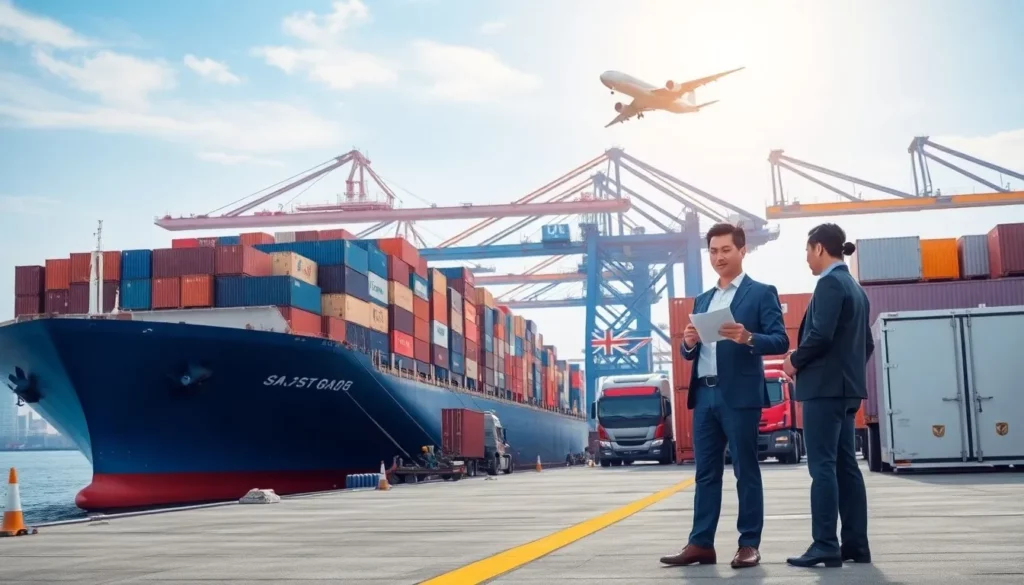Importing goods from China to New Zealand demands strategic planning, accurate cost estimation, and a dependable freight forwarding partner to ensure seamless customs clearance and timely delivery. This guide equips you with practical insights to streamline your shipping operations, cut costs, and comply with regulations for trade between these two vital markets.
Most Important: Reliable China freight forwarders offer comprehensive logistics services including customs clearance, carrier relationships, and shipment tracking for global importers. Choose providers with proven experience in your destination country and strong technology platforms
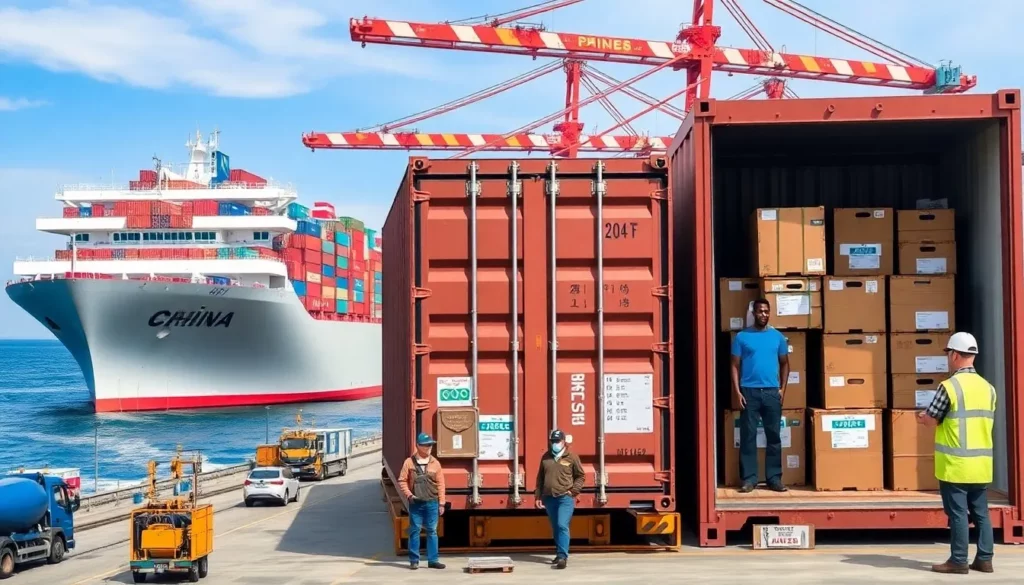
Core Shipping Methods from China to New Zealand
Sea Freight: Cost-Effective Choice for Bulk Shipments
Sea freight is your go-to for cost-efficient shipping when moving large volumes from China to New Zealand. At roughly $25 per cubic meter for basic rates, it’s perfect for businesses prioritizing affordability over speed.
- Why choose sea freight? Ideal for manufacturers, wholesalers, or retailers shipping non-urgent, bulky goods like furniture or raw materials.
- Real-world example: A furniture retailer importing dining sets uses sea freight to save significantly on costs, planning shipments 30-45 days in advance to align with inventory needs.
Full Container Load (FCL) Shipping: Best for Large-Scale Importers
FCL shipping delivers maximum value if you’re moving substantial volumes. A 20-foot container costs $1,050-$1,650, while a 40-foot container ranges from $1,550-$3,250 for base freight rates. You get dedicated container space, ensuring cargo security and optimized loading.
- Who benefits most? Large retailers and manufacturers importing electronics, furniture, or industrial components.
- Key advantage: Dedicated containers reduce contamination risks, perfect for sensitive goods like textiles or machinery parts.
- Tips: Plan container utilization carefully to maximize space and minimize costs.
Less than Container Load (LCL) Shipping: Flexible for Smaller Businesses
LCL shipping suits smaller importers who don’t need a full container. Rates average $72 per cubic meter, offering an affordable way to ship smaller quantities without large volume commitments.
- Ideal use cases: Startups testing new products, SMEs importing seasonal goods, or businesses shipping product samples.
- Real-world example: A New Zealand startup importing 2 CBM of apparel samples uses LCL to test market demand without overstocking.
- Best practices: Consolidate shipments to reduce per-unit costs and ensure proper packaging to avoid damage in shared containers.
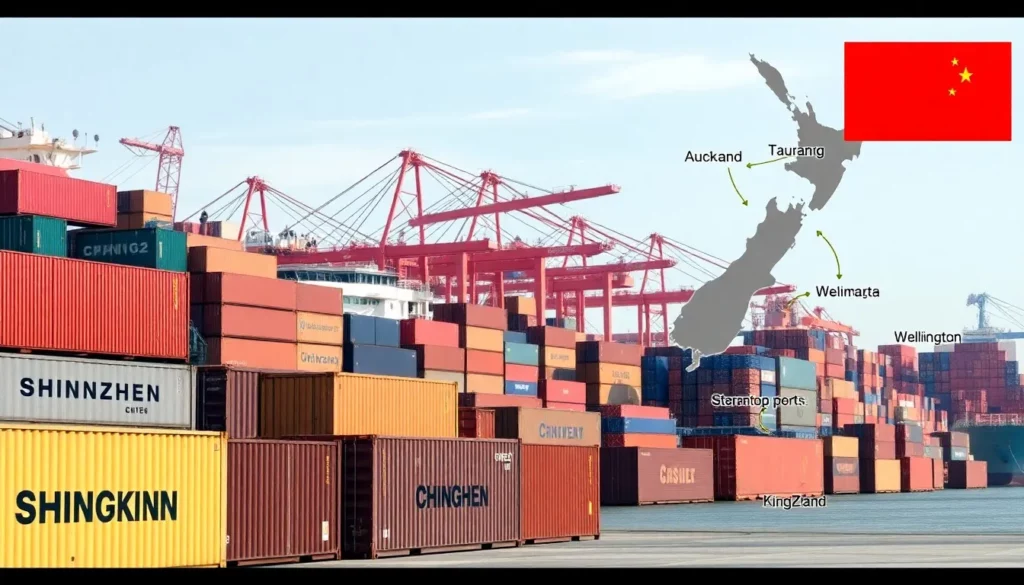
Transit Times from Major Chinese Ports to New Zealand
Transit times depend on port pairings and routes. Here’s a breakdown:
| Route | FCL Transit Time | LCL Transit Time |
|---|---|---|
| Shanghai to Auckland | 15-22 days | 18-25 days |
| Shenzhen to Tauranga | 17-24 days | 20-27 days |
| Qingdao to Wellington | 18-25 days | 20-27 days |
| Xiamen (via MSC WALLABY) | 15-22 days | 18-25 days |
- Tips: Choose ports like Shanghai or Shenzhen for faster routes and higher carrier availability.
- Important warnings: LCL shipments may face delays due to consolidation processes at origin or destination.
When to Choose Sea Freight
Sea freight is your best bet for non-urgent, bulky, or cost-sensitive shipments. It suits manufacturers importing raw materials, wholesalers stocking seasonal goods, or retailers with flexible delivery timelines.
- Who uses it? Large retailers shipping appliances or furniture benefit from sea freight’s cost savings.
- Key takeaway: Plan shipments well in advance to leverage lower costs and avoid peak season surcharges.
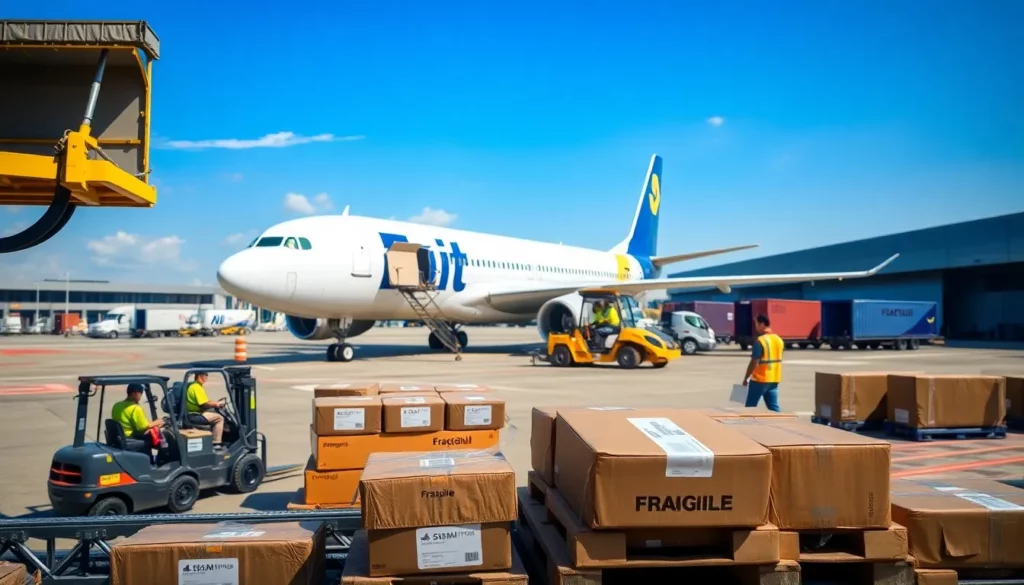
Air Freight: Speed for High-Value or Time-Sensitive Goods
Air freight delivers your goods in 3-7 days, ideal for urgent or high-value shipments. Rates start at $4.15 per kilogram, with costs driven by actual or volumetric weight.
- Why choose air freight? Perfect for e-commerce product launches or medical supplies needing fast delivery.
- Real-world example: A tech importer air-freights $50,000 worth of smartphones to meet a product launch deadline, avoiding lost sales from delays.
Standard Air Cargo vs. Express Air Freight
Standard air cargo takes 5-8 days and requires separate customs clearance arrangements. Express air freight cuts transit to 3-5 days, with integrated handling and priority processing included.
- Standard air cargo: Lower rates but demands more coordination.
- Express air freight: Higher costs but includes customs clearance for simplicity.
- Best practices: Use express for urgent needs; opt for standard when cost is a priority.
Volumetric Weight and Air Freight Costs
Air freight charges are based on the greater of actual weight or volumetric weight (length × width × height ÷ 5000). Lightweight, bulky items like clothing or promotional materials often incur volumetric charges, increasing costs.
- Tips: Optimize packaging to reduce dimensions and lower volumetric weight.
- Important warnings: Misreporting dimensions can lead to unexpected fees at departure or arrival.
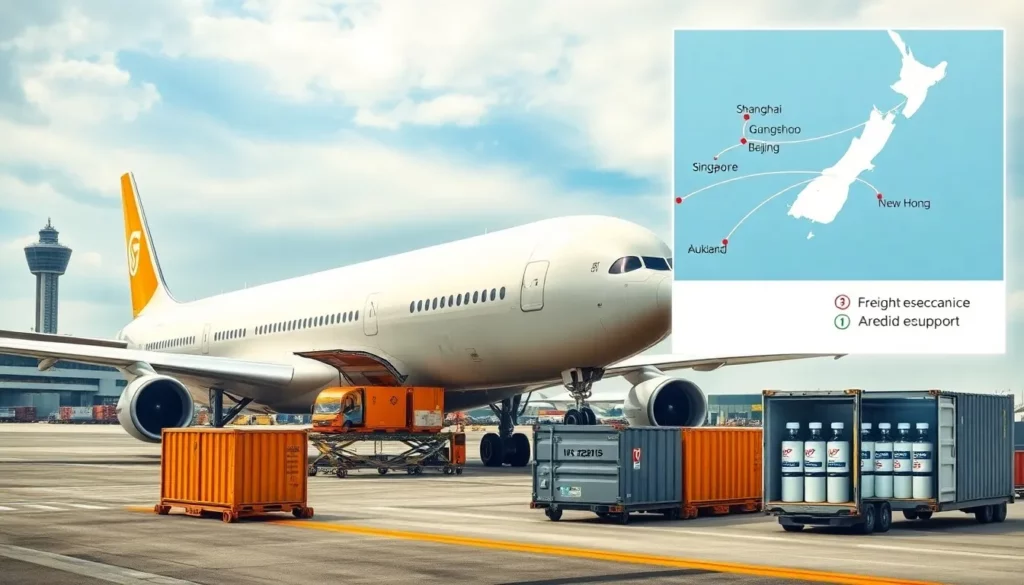
Air Freight Transit Times from China to New Zealand
Here’s a snapshot of typical transit times:
| Route | Standard Air Freight | Express Air Freight |
|---|---|---|
| Shanghai Pudong to Auckland | 5-7 days | 3-5 days |
| Guangzhou to Auckland | 5-8 days | 3-5 days |
| Beijing Capital to Auckland | 5-8 days | 3-5 days |
- Tips: Direct flights are faster but may have limited capacity in peak seasons. Connecting flights via Singapore or Hong Kong add 1-2 days but offer more flexibility.
- Key takeaway: Schedule air freight early during peak periods like Chinese New Year to secure space.
Why E-commerce and Specialty Importers Choose Air Freight
Air freight suits e-commerce brands launching new products, fashion retailers chasing trends, or tech importers moving high-value electronics. It’s also critical for medical devices or pharmaceuticals requiring speed or temperature control.
- Real-world example: A pharmaceutical distributor air-freights temperature-sensitive vaccines to ensure timely delivery and compliance.
- Best practices: Use air freight for high-margin goods where speed outweighs higher transport costs.

Express Courier Services: Fast, Small-Scale Solutions
Express couriers like DHL, FedEx, and UPS deliver in 2-4 days, perfect for urgent documents, samples, or small shipments under 50kg.
- Key benefits: Door-to-door service with integrated customs clearance and real-time tracking.
- Real-world example: A product designer sends prototypes to New Zealand via DHL for rapid supplier feedback.
- Tips: Use couriers for high-value, low-weight shipments to ensure speed and reliability.
Advantages of Express Couriers
Express services handle pickup, delivery, customs clearance, and duty payments, saving you time. DHL often delivers in 3 days, while FedEx and UPS offer competitive rates and reliable tracking.
- Best practices: Choose couriers with strong business delivery networks for B2B shipments.
- Key takeaway: Express services are worth the premium for time-critical shipments or direct-to-consumer orders.
Cost-Benefit Analysis for Express Shipping
Express shipping costs more per kilogram but offers unmatched convenience. It’s ideal for prototypes, product samples, or high-value customer orders.
- Real-world example: An e-commerce brand uses FedEx for premium customer orders to ensure 3-day delivery and boost satisfaction.
- Tips: Reserve express services for shipments where speed and reliability justify the higher cost.
Tracking and Reliability of Courier Networks
Express couriers provide real-time tracking, delivery confirmations, and insurance coverage. Most offer money-back guarantees for service failures, ensuring peace of mind.
- Best practices: Use courier tracking platforms to monitor shipments and communicate updates to stakeholders.
- Key takeaway: Dedicated account support from couriers helps resolve issues quickly and optimizes your shipping strategy.
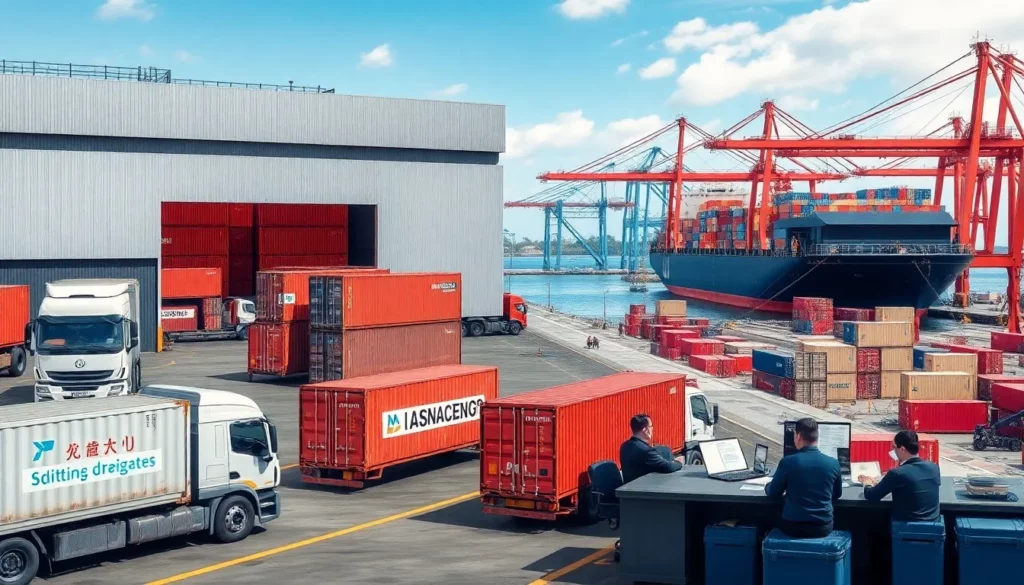
Shipping Costs from China to New Zealand
Your Checklist to Avoid Hidden Fees
To ensure accurate budgeting, account for all costs beyond the base freight rate. Hidden fees can erode profitability if not anticipated.
- Best practices: Request itemized quotes covering origin, transit, destination, and delivery charges.
- Important warnings: Incomplete quotes may omit surcharges or accessorial fees, leading to budget overruns.
Origin Costs in China
Local Trucking (Cartage): Moving goods from the factory to the port or airport costs $50-$150 per container, depending on distance. Factories near Shenzhen or Shanghai benefit from lower rates due to port proximity.
Export Clearance and Documentation: Filing export declarations costs $50-$100 per shipment. Complex products or special permits may increase fees, while Certificates of Origin add $25-$50 for FTA benefits.
Terminal Handling Charges (THC): These range from $60-$120 per container for sea freight or $50-$100 per air shipment. Larger ports like Shanghai offer competitive rates due to high volume.
- Tips: Work with suppliers near major ports to reduce cartage costs.
- Real-world example: A Guangdong factory near Shenzhen saves $50 per container compared to a remote Jiangsu supplier.
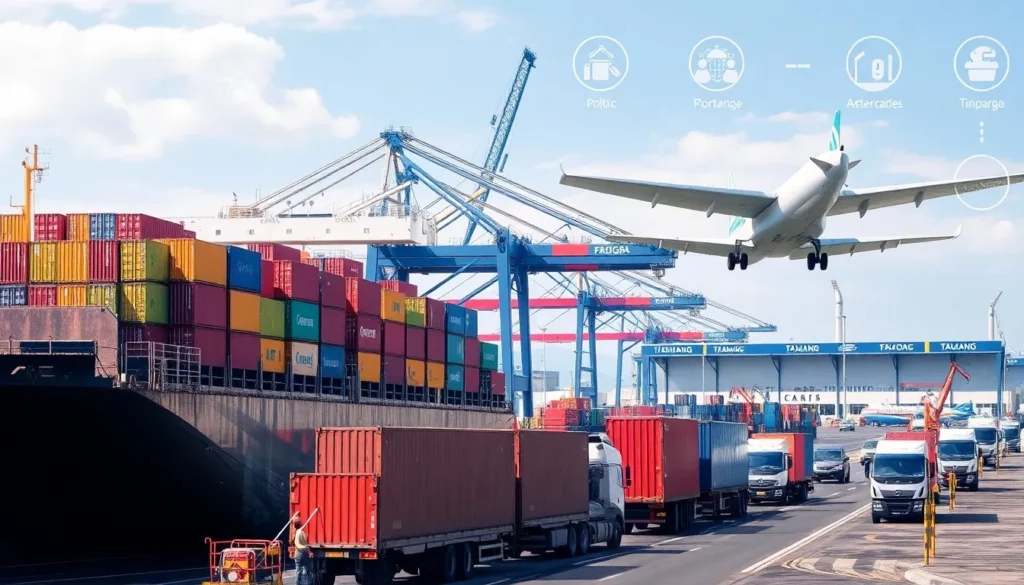
Main Freight Costs (Core Transit)
Base Carrier Rate: FCL sea freight ranges from $1,050-$1,650 (20-foot) to $1,550-$3,250 (40-foot). Air freight starts at $4.15 per kilogram, with rates spiking during peak seasons.
Fuel Surcharges: Bunker Adjustment Factor (sea) or Fuel Adjustment Factor (air) adds 10-20% to base rates, fluctuating with oil prices.
Peak Season Surcharges (PSS): Expect $200-$500 per container or $0.50-$1.00 per kilogram during Chinese New Year or holiday periods.
General Rate Increases (GRI): Sea freight GRIs add $100-$300 per container; air freight sees similar adjustments based on market conditions.
- Best practices: Lock in rates with long-term contracts to cap fuel surcharges.
- Important warnings: Book early to avoid PSS during high-demand periods.
Destination Costs in New Zealand
Terminal Handling/Port Fees: Auckland and Tauranga ports charge $200-$400 per container for sea freight or $50-$150 per air shipment, depending on cargo type.
Customs Brokerage Fees: Professional clearance costs $150-$300 per shipment. Complex goods may incur higher fees for special permits.
Import Duties: Duties range from 0-10% based on HS codes, with many goods enjoying 0% under the China-New Zealand FTA.
Goods and Services Tax (GST): A 15% GST applies to shipments over NZ$1,000, calculated on CIF value (cost, insurance, freight).
Biosecurity Fees: MPI levies standard fees, with additional costs for high-risk goods like plant products requiring phytosanitary certificates.
- Tips: Use licensed brokers to optimize FTA benefits and reduce duties.
- Important warnings: Combine multiple orders from one supplier on the same day, as they count toward the NZ$1,000 GST threshold.
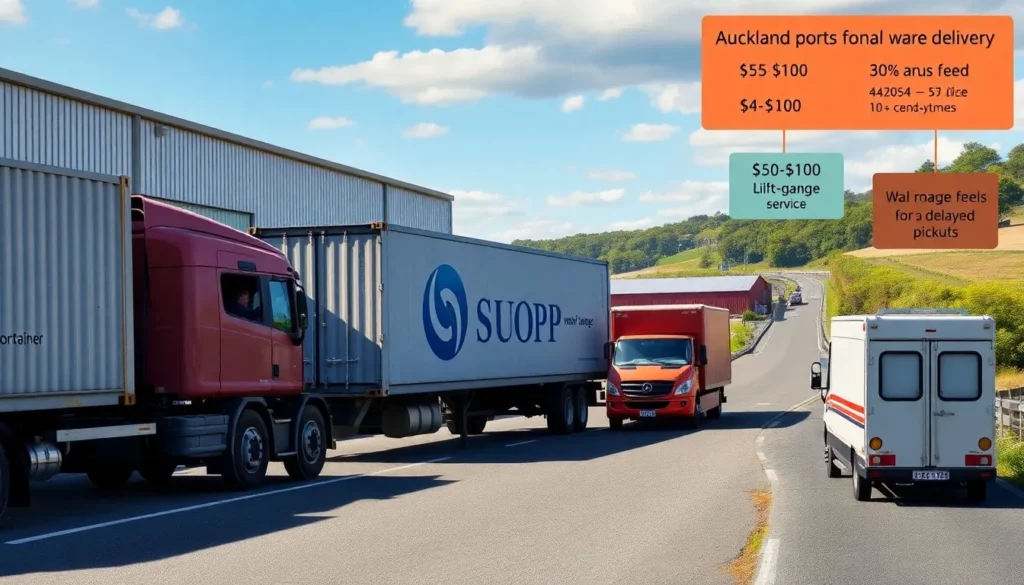
Final Delivery Costs
Last-Mile Trucking: Delivery from Auckland ports to local warehouses costs $100-$200 per container. Rural or specialized deliveries cost more.
Accessorial Fees: Lift-gate services ($50-$100), residential delivery, or storage fees for delayed pickups add to costs.
- Real-world example: A rural delivery requiring a lift-gate adds $150 to a standard Auckland delivery.
- Best practices: Schedule deliveries promptly to avoid demurrage or detention charges.
How to Secure an Accurate Shipping Quote
To get a reliable quote, provide your freight forwarder with precise details:
- Cargo dimensions, weight, value, and HS codes
- Pickup and delivery addresses
- Special handling or timing requirements
Compare total landed costs, not just freight rates, and evaluate transit times and service reliability.
- Best practices: Request itemized quotes to ensure transparency.
- Key takeaway: A comprehensive quote helps you budget accurately and avoid surprises.
Cost Comparison Example
| Shipment Type | Details | Total Landed Cost |
|---|---|---|
| LCL (1 CBM) | Shanghai to Auckland | $400-$600 |
| Air Freight (50kg) | Shanghai Pudong to Auckland | $300-$450 |
- LCL breakdown: $72 freight, $100 origin costs, $200 destination fees, $50-$150 delivery.
- Air freight breakdown: Higher per-kilogram costs but faster delivery.
Tips: Use LCL for cost savings on small shipments; choose air for urgent needs.
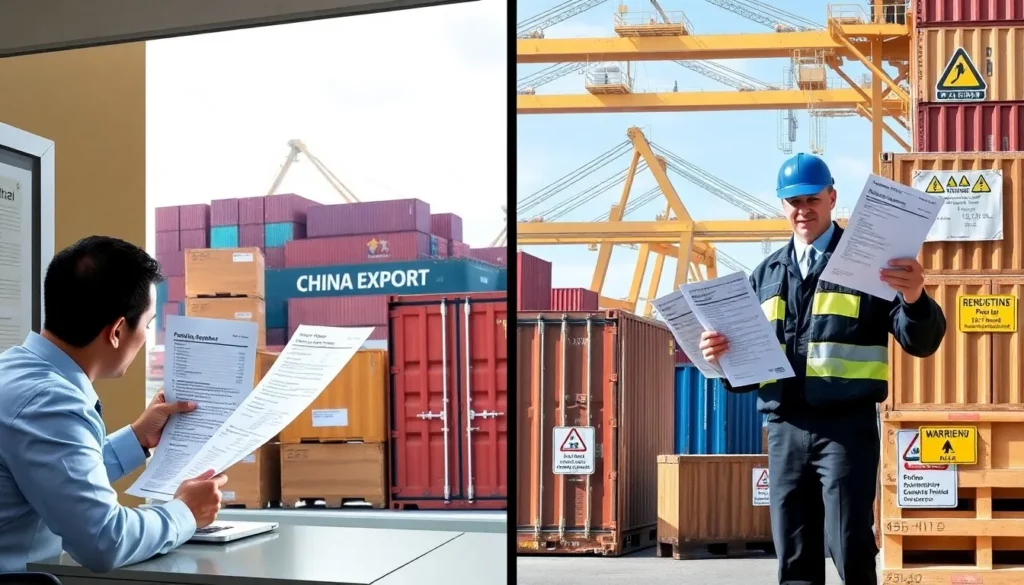
Customs Clearance and Compliance
China Export Documentation
Commercial Invoice: Include detailed product descriptions, HS codes, and accurate values to avoid clearance delays.
Packing List: Specify weights, dimensions, and package markings to streamline handling and inspections.
Bill of Lading/Air Waybill: These serve as proof of shipment and title. Originals are required for sea freight cargo release.
Export Declaration: Filed electronically via China’s AES, with licenses needed for restricted goods.
- Best practices: Verify all documentation with your supplier before shipment to ensure compliance.
- Important warnings: Inaccurate invoices or packing lists can trigger inspections and delays.
New Zealand Import Requirements
Customs Service Role: The New Zealand Customs Service (NZCS) oversees import clearance via the Trade Single Window (TSW) system. Risk-based examinations may apply.
Import Entry Documents: Submit commercial invoices, packing lists, and Bills of Lading. Additional certificates may be required for restricted goods.
MPI Biosecurity Clearance: All imports face biosecurity checks to prevent pest or disease entry. Plant products need phytosanitary certificates.
Prohibited/Restricted Imports: Weapons, drugs, and endangered species are restricted. Used vehicles or machinery require special permits.
- Real-world example: A wooden furniture shipment without a phytosanitary certificate faces MPI inspection delays and extra fees.
- Tips: Work with suppliers to ensure biosecurity compliance upfront.
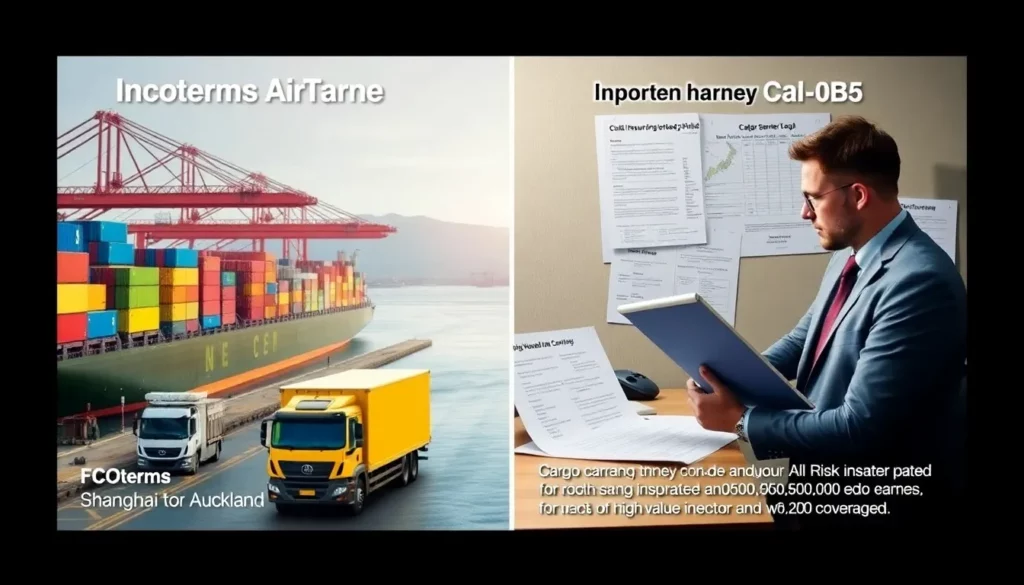
Incoterms and Cargo Insurance
Selecting the Right Incoterms
Incoterms define responsibilities between you and your supplier. Here’s how they apply:
| Incoterm | Importer Responsibility | Best For |
|---|---|---|
| EXW | Entire logistics process | Experienced importers with control |
| FOB | International transport | Most China-NZ shipments |
| CIF | Customs and final delivery | New importers seeking simplicity |
| DDP | None (supplier handles all) | Maximum convenience, higher cost |
- FOB example: You select a trusted carrier for a Shanghai-Auckland shipment, saving costs over CIF.
- Best practices: Choose FOB for control or DDP for simplicity if you’re new to importing.
Why Cargo Insurance Matters
Standard carrier liability offers minimal coverage ($500 per package or $2 per kilogram), insufficient for high-value goods. Comprehensive insurance is essential.
- All-Risk Insurance: Covers theft, handling damage, and natural disasters.
- Named Perils: Limited to specific risks like fire or collision, less costly but riskier.
- Premiums: 0.1%-0.5% of cargo value.
- Real-world example: A $50,000 uninsured electronics shipment damaged in transit results in $49,000 in losses, avoidable with a $150-$250 All-Risk policy.
- Important warnings: Always purchase insurance for high-value or fragile goods.

Choosing the Right Freight Forwarder
Freight Forwarder Selection Checklist
To ensure reliable service, vet forwarders carefully:
- Licensing: Confirm IATA (air) or FMC (ocean) credentials.
- Experience: Look for proven China-NZ expertise.
- References: Request testimonials from similar businesses.
- Network: Ensure strong New Zealand partnerships for smooth clearance.
- Technology: Prioritize real-time tracking and responsive communication.
- Tips: Ask for itemized quotes and contingency plans for customs delays.
- Important warnings: Avoid forwarders with vague quotes or no local references.
The Role of Customs Brokers
Licensed brokers ensure compliance with New Zealand regulations, optimizing duty calculations and avoiding penalties.
- Verification: Confirm current NZCS licensing and product-specific experience.
- Express couriers: DHL, FedEx, and UPS include brokerage; sea/air freight requires separate arrangements.
- Best practices: Partner with brokers familiar with your industry to streamline clearance.
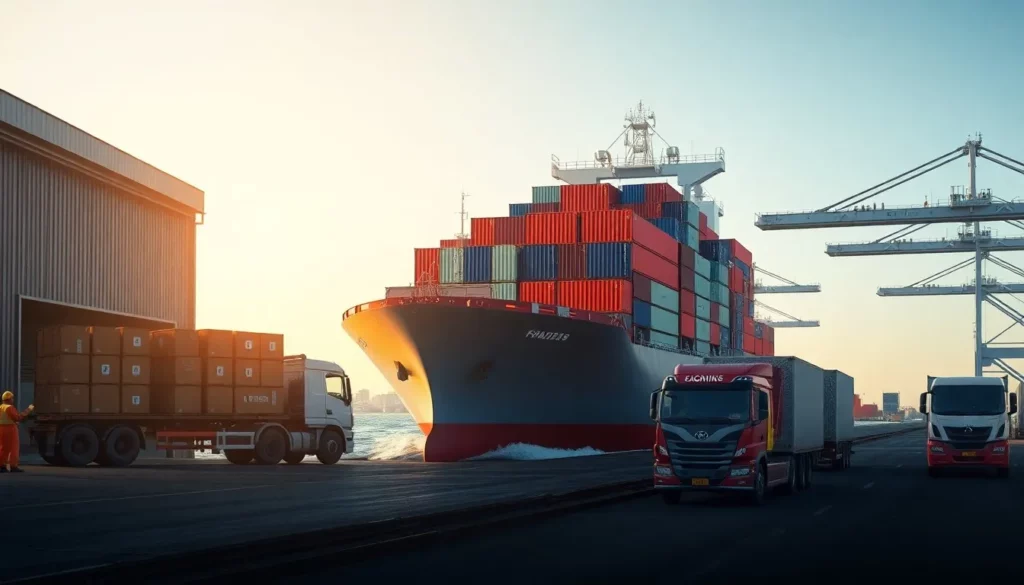
Step-by-Step Guide to Your China-NZ Shipment
Step 1: Plan and Request Quotes
Finalize cargo details (weight, dimensions, HS codes) and specify pickup/delivery requirements. Request itemized quotes from multiple forwarders, comparing total landed costs.
- Tips: Include all special requirements to avoid surprises.
Step 2: Book and Hand Over Cargo
Confirm booking details and coordinate cargo pickup per Incoterms. Ensure proper packaging and insurance coverage.
- Best practices: Verify documentation before handover.
Step 3: Manage China Export
Your forwarder handles export declarations and customs clearance, typically in 1-2 days. Cargo is loaded per safety standards.
- Tips: Monitor loading notifications for accuracy.
Step 4: Track Transit
Receive Bills of Lading or Air Waybills and track shipments via forwarder platforms. Sea freight takes 25-45 days; air freight 5-10 days.
- Key takeaway: Regular tracking updates keep you informed.
Step 5: Clear New Zealand Customs
Your broker lodges import entries via TSW, calculating duties and GST. MPI biosecurity checks ensure compliance.
- Important warnings: Inaccurate documentation risks inspections and delays.
Step 6: Arrange Final Delivery
Coordinate last-mile delivery and inspect cargo upon arrival. Sign delivery documents and report any issues promptly.
- Best practices: Retain all documents for accounting and claims.
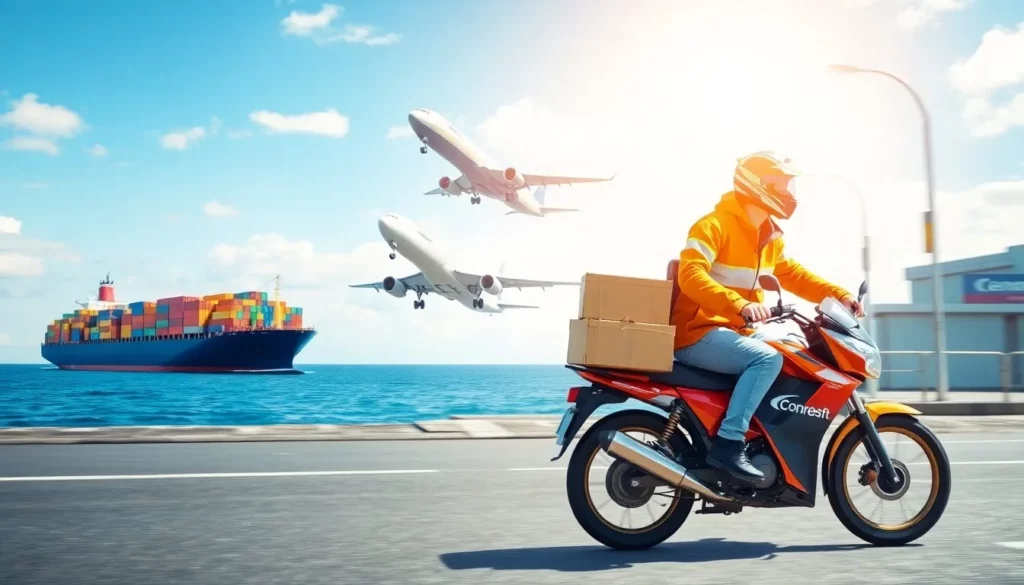
Conclusion
Sea freight offers cost savings for bulk shipments (15-35 days), air freight ensures speed for urgent goods (3-7 days), and express couriers excel for small, time-critical packages (2-4 days). Partner with an experienced freight forwarder to optimize your supply chain. Contact providers with China-NZ expertise for tailored solutions, providing detailed shipment specs for accurate quotes.
Frequently Asked Questions (FAQs)
1. How do I choose between sea and air freight?
Compare total landed costs, including freight, duties, and inventory holding. Sea freight saves on large shipments; air freight minimizes inventory costs for urgent goods.
2. What causes customs delays?
Incomplete documentation, incorrect HS codes, or biosecurity non-compliance are common culprits.
3. What’s the difference between a quote and final invoice?
Quotes estimate standard costs; invoices reflect actual charges, including surcharges or accessorials.
4. How long is door-to-door shipping?
Sea freight: 30-45 days; air freight: 7-14 days; express couriers: 5-7 days.
5. What are CIF risks?
You lose control over carrier selection and insurance quality, potentially leading to delays or inadequate coverage.

